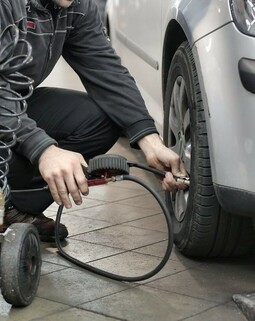Mua ban oto – Vietwheels.com
Introduction
Are you looking to relocate to Vietnam but aren’t ready to let go of your car? If you want to import a vehicle into Vietnam, there are some serious hoops that you will have to jump through.
Along with the standard import taxes that apply to the vehicle, be prepared to pay additional customs fees. The customs regulations can seem like an endless laundry list of protocols and guidelines, which can be daunting to read through. This article by Vietwheels will guide you through how you can import a car into Vietnam with ease.
Vietnam had imported over 86,000 completely built-up (CBU) automobiles worth almost $1.9 billion as of November 15, according to Vietnam Customs. The combined spending of nearly $5.1 billion on importing automobiles and spare parts marks a year-on-year reduction of $1.3 billion, owing to Covid-19 impacts.
A significant increase in car imports had been seen in recent months, with over 10,300 units in October, 9,700 units in September and 6,100 units in August. The first half of November saw the import of 6,227 units valued at over $135 million.
This is a signal for car importers to kickstart sales campaigns for the year-end season, industry insiders said. Most of car imports are from Thailand and Indonesia, at an average price range of VND350 million to VND 1.2 billion. Regulations have also become more accommodative for car importers, which we discuss further in this article.
Requirements to Importing a Car into Vietnam
Before going into the details of the vehicle import process, you need to consider the following requirements for important a car into Vietnam:
-
A vehicle can’t be more than five-years-old counting from manufacturing date.
-
It also needs to be registered for at least six months in the owner’s home country and have a minimal mileage of 10,000km.
-
The present owner of the vehicle must be the original owner.
-
If the car has changed hands since the original title was issued it cannot be imported to Vietnam.
-
Do not disassemble cars when transporting and importing to Vietnam.
-
Cars should not be significantly modified in terms of appearance and specifications, such as changing the engine power or the VIN (Vehicle Identification Number).
Procedures and required documents
Vehicles may enter the country through one of four ports: Cai Lan in Ha Long City, Hai Phong, Danang and Ho Chi Minh City. Vietnam Customs is in charge of the importation of any vehicle into Vietnam. The necessary application forms (as detailed below) can be downloaded from their website.
To import a vehicle into the country, the following documents will need to be supplied to Vietnam Customs:
-
An application form for importing an automobile into Vietnam (don de nghi nhap khau o to)
-
An automobile import licence (giay phep nhap khau)
-
A bill of lading (van tai don)
-
A customs declaration for export/import (to khai hai quan xuat/nhap khau)
-
A vehicle registration certificate (giay dang ky xe nuoc ngoai)
In addition, the owner of the vehicle will need to present the customs officer with:
-
A valid passport
-
A visa that is valid for at least three months
-
A valid work permit
-
A household registration book
The household registration book must be issued by the Ministry of Public Security of Vietnam using the contact information below:
The Ministry of Public Security of Vietnam
Address: 44 Yet Kieu, Hoan Kiem District, Hanoi
Tel: (04) 06943647 / (04) 06941165
What to Do after the Arrival of the Vehicle
Once the vehicle arrives in Vietnam, it will need to be inspected by Vietnam Customs. A customs officer will check the automobile import licence, bill of lading, customs declaration for import/export, and conduct a physical inspection of the vehicle.
The owner of the vehicle may request to see the vehicle before presenting it for inspection, but this process must be overseen by a customs officer. Import duties will need to be paid to Vietnam Customs before the vehicle can be released. Automobiles are assessed a Special Sales Tax of 50 percent or more on the value of the vehicle, unless the importer is of diplomatic status, in which case, the Special Sales Tax is waived.
Once the customs are clear for the vehicle, as the owner of the car, you have a maximum of three business days to apply to register your car with the Vietnamese authorities. The car will then be examined based on safety and environmental standards.
If the car passes the test, the owner will obtain a certificate of technical safety and environmental protection. Then, you will have to submit the certificate to the customs to complete the entire import process.
Then, the car must be registered at the local police traffic office and all the following necessary documents must be submitted:
-
Certificate of Vehicle Inspection
-
Vehicle Registration Declaration
-
Proof of insurance
Once the registration is done at the police traffic office, the foreigner will get a Vietnamese license plate. Do note that a foreign license plate may not be permitted.
Registration and License Plates
Once the car has passed through customs, the owner has three working days to submit an application for the vehicle's Vietnam registration. The vehicle will need to be tested for safety and environmental standards and receive a certificate of technical safety and environmental protection. These certificates will need to be submitted to Vietnam Customs to complete the processing of the vehicle.
The next step will be to have the vehicle registered at the designated local police traffic office. All required documentation, including the Certificate of Vehicle Inspection, the Vehicle Registration Declaration, proof of insurance and the owner’s valid passport, visa and work permit will need to be presented to the traffic office.
After the vehicle has successfully passed through customs and been registered with the police traffic office, Vietnamese licence plates will be issued. Foreign licence plates may not be used in Vietnam. Once the application for licence plates has been submitted, temporary plates, valid for 20 days, will be issued. If necessary, the temporary plates may be extended once for an additional 20 days. Once the permanent plates have been issued, they must be affixed onto the vehicle.
Foreign vehicles will have licence numbers preceded by the letters NN or NG, which identifies the vehicle as being either foreign or diplomatic. The other letters and numbers on the licence plates will reflect the city and province where the vehicle is registered and other information to identify the vehicle.
Shipping options
The four most common methods available for shipping cars into Vietnam are discussed below:
-
Container:
By using a container for shipping, we can load anywhere from 1 to 6 cars (depending on size), the vehicles can either run and drive, or be project cars. We offer consolidation when shipping to the port, saving you money by shipping your vehicles along with other cars in the same container. When shipping high-value vehicles, we can load them in their own dedicated 20ft or 40ft containers.
-
Roll-on/Roll-off (RORO)
Shipping via Roll-on/Roll-off is another option when shipping cars overseas. However, unlike with containarized car shipping, you cannot ship anything inside of your vehicle, and the car be in run and drive condition to be able to drive on and off the ship. The ports which support RoRo vary widely, and so do the rates.
-
Airplane
If you require your vehicle overseas as quickly as possible, we recommend shipping the car via Air-Freight service. Compared to lengthy shipping times and possible port delays when shipping in a container or via RoRo, shipping your car by Air is the quickest shipping options. Transit time is estimated at around 3 to 10 days, depending on the documentation and customs requirements.
Changes to regulations
Vietnam has scrapped the requirement for vehicle type approval certificates for car imports and eased customs clearance procedures.
On February 5 the government amended provisions of Decree 116, which had imposed stringent conditions on the assembly, import and maintenance of automobiles since 2018.
Importers no longer need to produce vehicle type approval certificates (VTAs) issued by authorities in the country of origin. VTAs, which confirm that production samples of a design meet specified performance standards, had been made compulsory by Decree 116.
Besides, imported cars no longer need to undergo rigorous quality tests if they are identical to previously imported vehicles that had been tested in the last 36 months.
Decree 116 had required each individual batch, without exception, to be tested at the time of import.
Immediately after Decree 116 came into effect on January 1, 2018, car imports plummeted 85 percent year-on-year in the first quarter as importers scrambled to procure the document.
Governments in Vietnam’s major car supplying countries such as Thailand and Indonesia, which had never issued this type of document before, had to start doing so to prevent losing exports.
According to industry insiders, Decree 116 was enacted as non-tariff barrier to protect the domestic industry against a potential flood of car imports as a result of zero tariffs under the ASEAN Free Trade Agreement in 2018.
Businesses quickly adapted to the new regulations, and car imports picked up again in the second half of the year, and have been rising until now.
Unlike importers of Japanese vehicles, who took a lot of time to get VTAs, German carmakers such as Mercedes, Porsche, Truong Hai (BMW), Volkswagen, and Audi were not affected much since their country already issued the document. However, stricter customs clearance procedures did slow down luxury car imports from Europe, and dealers had to delay delivery to customers.
The new regulation only applies to import of unused cars, and Decree 116 still applies in full to second-hand imports.
Businesses quickly adapted to the new regulations, and car imports picked up again in the second half of the year, and have been rising until now, which is promising to car dealerships that import cars to Vietnam.





